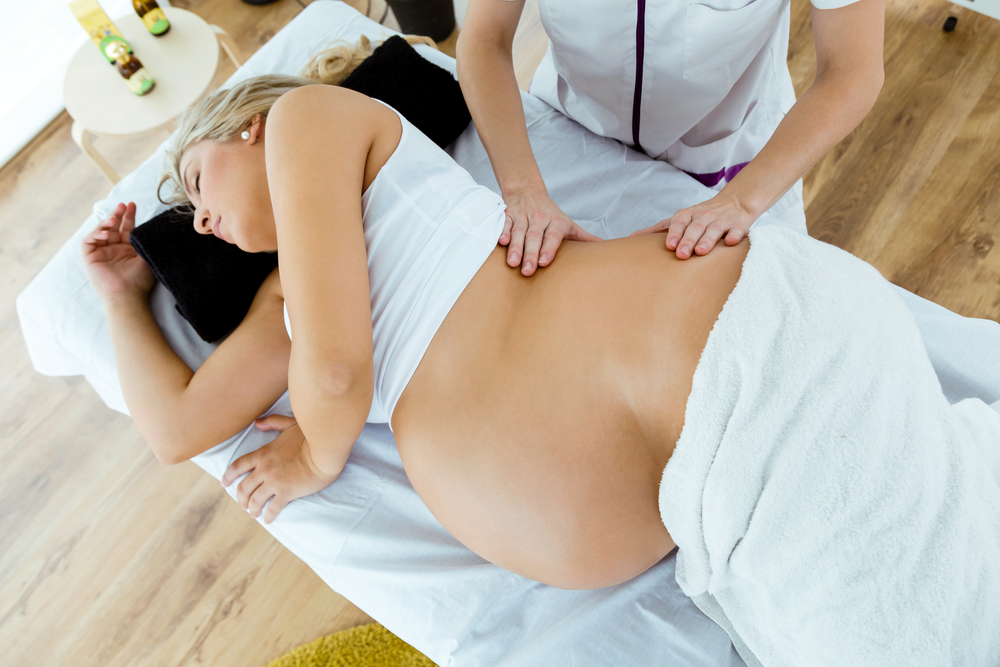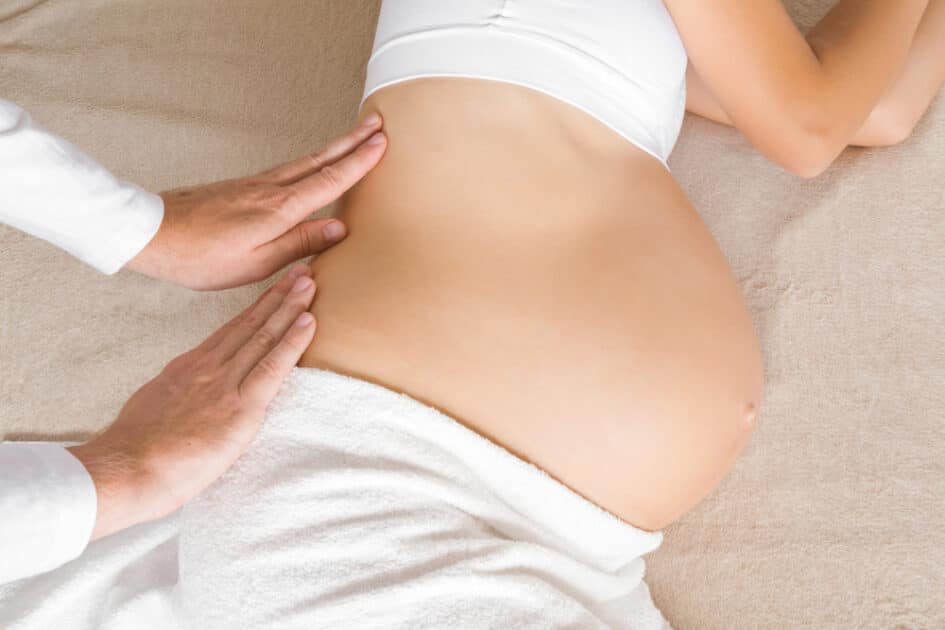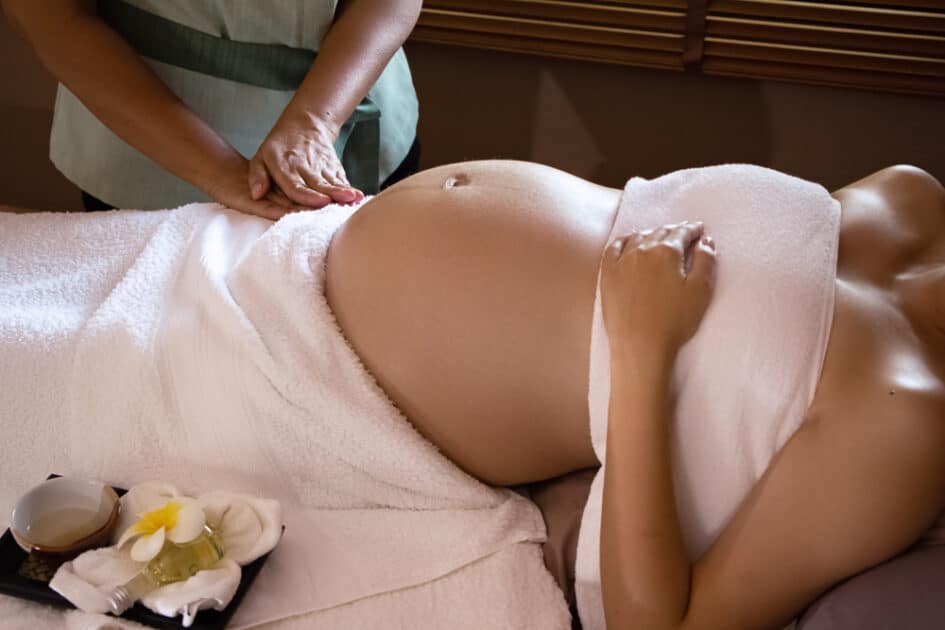Prenatal Massage Therapy: Enhancing Maternal Health and Well-being

Relax and Rejuvenate: The Power of Prenatal Massage for Expectant Mothers
What is Massage 17th Jul, 2023
For generations, prenatal massage treatment has been employed as a therapeutic strategy to enhance general health and well-being. Its effects go beyond relaxation and stress reduction, and it is especially beneficial for pregnant women.
Prenatal massage treatment has been shown in studies to successfully reduce anxiety, symptoms of muscle aches, depression, and joint pains, as well as enhance birth outcomes and baby health.

In this post, we will look at the numerous advantages of prenatal massage treatment as well as the risks and concerns for pregnant women who want to try this type of therapy.
Prenatal Massage: Is it Safe for Pregnant Women?
It is often advised to postpone booking a prenatal massage until after the first trimester. The chance of miscarriage is somewhat increased during the first three months of pregnancy, and some women may feel dizziness or morning sickness, which can make massage difficult. After the first trimester, and with your healthcare provider’s approval, you can safely enjoy the advantages of prenatal massage.
Massage’s ability to induce labor is likewise generally refuted by good scientific data. While some massage therapists may avoid certain pressure areas, such as the one between the anklebone and heel, due to worries about possible contractions, the available research does not establish a clear relationship between massage and labor induction.
The Benefits of Prenatal Massage Therapy
For ages, therapeutic massage has been used to promote general health, alleviate stress, and relieve muscular tightness. Studies have indicated that prenatal massage therapy can improve the quality of delivery and the health of the infant while also reducing anxiety and depression signs.

Swedish massage uses mild pressure on the body’s muscle groups to reduce muscular tension and increase lymphatic and blood circulation. Swedish massage is the most often utilized massage treatment during pregnancy because it helps many of the common aches and pains produced by hormonal changes in the skeletal and circulatory systems.
There is a difference between therapeutic prenatal massage and perineal massage, the latter of which refers to the technique of physically stretching the muscles around the birth canal to assist lessen the chance of episiotomy or trauma connected with birthing.
Hormone Regulation: Promoting Mood and Cardiovascular Health
Massage treatment has been shown to have a favorable effect on hormone levels connected with relaxation and stress during pregnancy. Women who had bi-weekly massages for five weeks had lower levels of stress chemicals such as norepinephrine and cortisol, but their dopamine and serotonin levels increased, according to studies done over the last decade.
These hormone changes not only help with mood control, but they also help with cardiovascular health. Furthermore, these hormonal changes have been related to fewer problems during labor and a lower frequency of neonatal issues, such as low birth weight. Incorporating therapeutic massage into normal prenatal care can so help both the mother and the baby.
Swelling and Edema Reduction
Swelling of the joints, often known as edema, is a frequent ailment during pregnancy. This syndrome develops as a result of the expanding uterus’s diminished circulation and increased strain on major blood arteries.
Prenatal massage stimulates soft tissues, minimizing fluid collection in swollen joints. It also improves lymphatic circulation, which assists in the clearance of tissue waste from the body. Massage treatment relieves and improves comfort for pregnant women by treating edema.
Nerve Pain Reliever
During late pregnancy, many women have sciatic nerve pain, which is characterized by discomfort radiating from the lower back and pelvic floor. The uterus’s strain on these muscles causes tension and swelling, which can compress adjacent nerves. Prenatal massage treatment relieves sciatic nerve discomfort by relieving tension in the surrounding muscles.
Massage therapy, by targeting irritated nerves, is a natural and non-invasive technique of addressing nerve pain during pregnancy.
Recommended:
Pelvic Floor Physical Therapy, What is it? Benefits And How To Do It?
Additional Benefits of Prenatal Massage
Aside from the particular advantages listed above, prenatal massage treatment provides a variety of benefits that add to overall well-being throughout pregnancy. These are some examples:
1. Reduced Back Pain: Massage therapy targets muscle tension in the back, alleviating discomfort commonly experienced by pregnant women.
2. Reduced Joint Pain: By relieving pressure on joints, massage therapy helps minimize joint pain and discomfort.
3. Improved Circulation: The gentle pressure applied during massage promotes blood flow, enhancing overall circulation in the body.
4. Muscle tension and headaches are reduced: Massage therapy helps relax muscles and alleviate tension, reducing the occurrence of headaches.
5. Reduced Stress and Anxiety: The calming effects of massage therapy can significantly reduce stress and anxiety levels in pregnant women.
6. Improved Soft Tissue and Muscle Oxygenation: Enhanced blood circulation facilitates improved oxygen supply to soft tissues and muscles, promoting their health and function.
7. Better Sleep: Prenatal massage therapy promotes relaxation and can improve sleep quality for expectant mothers.

Precautions for Prenatal Massage
While prenatal massage treatment is typically safe and useful, pregnant women should consult with their prenatal care physician about their wish to get a massage.
Precautions and collaboration with competent specialists can assist guarantee a safe and productive experience. Consider the following suggestions:
Seek an Appropriate Massage Therapist
Certified prenatal massage therapists possess specialized training and knowledge to address the unique needs of pregnant women. They are familiar with safe positioning techniques and can identify potential complications or concerns.
Positioning During Massage
Many professionals recommend side-lying as the best position for pregnant women during the massage. Tables with holes in the abdomen may not provide adequate support and can still exert pressure on the abdomen or cause uncomfortable stretching of the uterine ligaments.
It is important to consult with your massage therapist before your first appointment to discuss the positioning they employ.
Consultation With a Healthcare Provider
Pregnant women should consult with their healthcare provider before receiving prenatal massage therapy. This is especially important for women with high-risk pregnancies or specific medical conditions.
It is also crucial for those who have recently experienced bleeding, pre-term contractions, or severe symptoms such as swelling, high blood pressure, or sudden, severe headaches.
Timing
Prenatal massages are generally considered safe after the first trimester. However, it is recommended to avoid massage during the first three months of pregnancy, as this period is associated with an increased risk of miscarriage and can be accompanied by symptoms such as dizziness and morning sickness.
It is always advisable to consult with your healthcare provider before starting any new therapeutic practices during pregnancy.
Recommended:
Experience Ultimate Tranquility: Types of Massage Discover the Top 10 Most Relaxing
FAQs
Do you wear a bra during prenatal massage?
Optional, based on personal comfort.
Do you keep clothes on for prenatal massage?
Usually, undergarments can be worn; the rest is up to personal preference.
Do you lay on your stomach during a prenatal massage?
No, usually on the side or with special support to avoid pressure on the abdomen.
What makes a prenatal massage different?
Specialized techniques and positioning to accommodate pregnancy needs and ensure safety.
What do they do in prenatal massage?
Focus on relieving pregnancy-related discomforts, enhancing circulation, and providing relaxation, using gentle techniques.
The Bottom Line
Prenatal massage treatment has several advantages for pregnant moms, as it addresses a variety of physical and mental demands throughout pregnancy. From hormone modulation and edema reduction to nerve pain relief and relaxation, this type of treatment can greatly improve a mother’s well-being. Pregnant women may assure a safe and beneficial experience by working with trained prenatal massage therapists and speaking with healthcare specialists.
Individual concerns and medical guidance, like with any therapeutic method, should be taken into account to tailor care and optimize the advantages of prenatal massage therapy. By incorporating prenatal massage therapy into their routine prenatal care, women can experience reduced stress and anxiety levels, improved mood, better sleep, and relief from common discomforts associated with pregnancy such as back pain and joint aches.
The therapeutic touch of a certified prenatal massage therapist can promote circulation, ease muscle tension, and enhance lymphatic drainage, contributing to a healthier and more comfortable pregnancy experience.
















